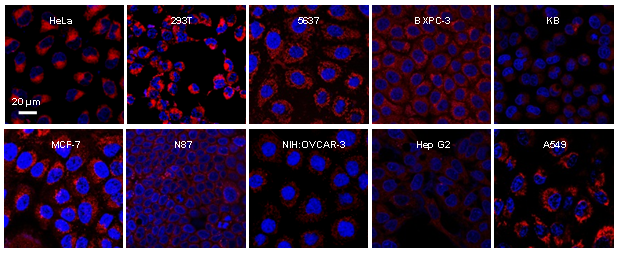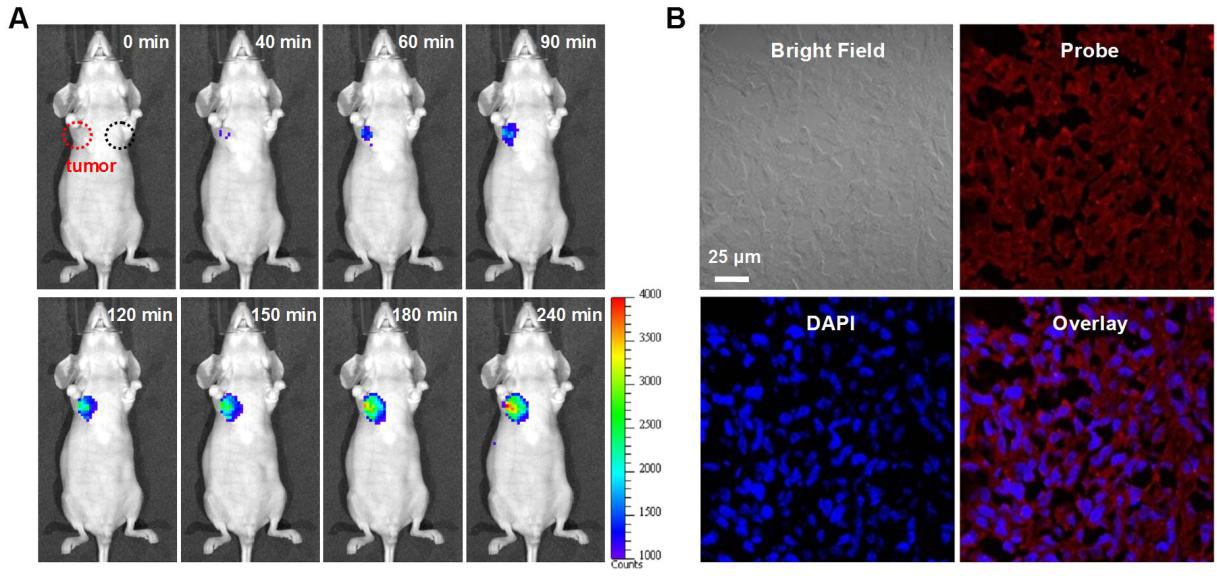Accurately distinguishing tumor cells from normal cells holds the key to early diagnosis, effective intervention and treatment of cancer, however, of which the fundamental difficulties are the heterogeneity of tumor cells and the lack of truly specific and ideally universal cancer biomarkers.
Recently, aiming at the hallmarker of cancer, uncontrollable cell growth, Prof. ZHANG Zhongping’s research group from Institute of Intelligent Machines (IIM), Hefei Institutes of Physical Science, developed a spherical nucleic acid beacon (SNAB) probe, and made a breakthrough in the field of cancer diagnosis and precise surgical navigation based on the molecular phenotype of telomerase activity, according to their paper published in the ACS Nano.
The researchers designed novel telomerase SNAB probes by loading a large amount of specific double-stranded DNA onto the surface of biocompatible Au nanoparticles.
Owing to the high telomerase activity expressed in most tumor cells, the SNAB probes could precisely identify tumor cells versus normal ones.
More importantly, the SNAB technology outperformed the gold standard method of telomerase activity measurement using PCR in terms of flexibility because it was applicable to both single cells and solid tumors in vivo (beyond cell lysates).
The developed SNAB probes are ideal optical imaging contrast agents, which would impact medical diagnostics, therapeutic response assessment and image-guided surgery.
Link to the paper: Cross-platform cancer cell identification using telomerase-specific spherical nucleic acids

Fig. 1 Different types of tumor cells with SNAB probes (Image by LIU Renyong)

Fig. 2 In vivo imaging of telomerase activities in solid tumors (Image by LIU Renyong)
Contact:
ZHOU Shu
Hefei Institutes of Physical Science (http://english.hf.cas.cn/)
Email: zhous@hfcas.ac.cn
 Tel: +86-551-65591206
Tel: +86-551-65591206
 Fax: +86-551-65591270
Fax: +86-551-65591270
 Emai: zhous@hfcas.ac.cn
Emai: zhous@hfcas.ac.cn
 350 Shushanhu Road
350 Shushanhu Road